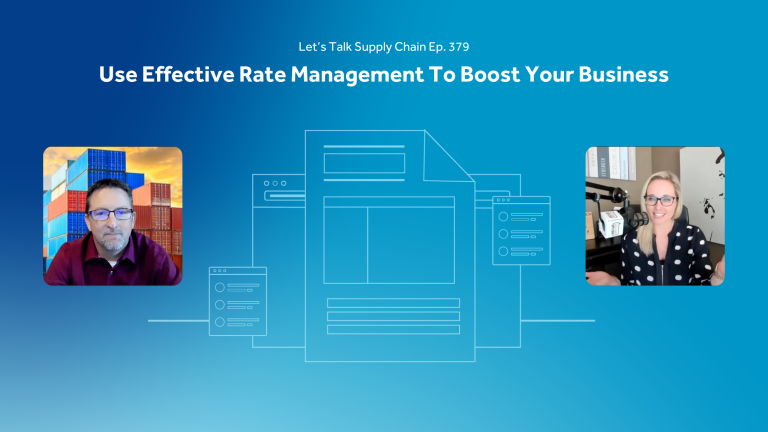Four key priorities for recession survival
This holds true at any time, but especially when facing the type of recession that is looming upon us. Nothing is ever more essential for your small trucking company to survive this recession than prioritizing these four things:
- Service your customers with excellence
- Control your costs
- Look after your drivers and owner/operators
- Work your receivables
Any small trucking company that can position itself to do these four things, preferably before a recession hits, is in an excellent position to not only survive, but thrive even as the economy is contracting.
Four steps to recession-proof your small trucking company
Given the current state of the market, the best way to achieve these priorities is to find opportunities to excel at the following:
Control fuel costs
Without question, the largest cost incurred by any small trucking company is the purchase of fuel. And given what has happened with fuel prices in recent months in a concerningly volatile fuel market, small trucking companies need every advantage they can get here.
Well managed fuel programs can provide excellent opportunities for savings on fuel purchases. We offer one, and participating companies saved close to 15 percent on their fuel purchases in the first 20 days of July. One user purchased 234 gallons in a single fill-up and saved $214 because of membership in our network. Imagine the impact on a small trucking company’s bottom line if they can save that much two or three times a week.
With the right fuel providers on board, a fuel program can make a significant impact on a carrier’s bottom line, being the difference that keeps their trucks and business running in today’s circumstances.
Obviously it also makes a big difference to manage other parts of the business well – avoiding dry runs, for example, and minimizing idling time. But in the end, you have to purchase fuel. The smarter you are in managing that need, the better you can thrive in tough economic times.
Boost cash flow by accelerating invoicing
We are not anti-factoring. It has its place as a viable solution to immediate cash flow needs, and we support our carriers with access to factoring whenever they need it. That being said, it’s not sustainable for a business long-term, so we urge small trucking companies to accelerate their cash flow so they can exercise the option of not factoring.
Newly developed technology in our industry facilitates this significantly by helping users to invoice jobs more quickly by automating much of the process.
Using traditional systems, a driver might deliver a load in a given city then take a picture of the bill of lading to send in a text or an e-mail to someone in the back office. That person has to pull that information out and hand it to the accounting clerk, who will prioritize it as quickly as possible. But in most operations, that invoice isn’t going out right away.
A better system would capture proof of delivery in a matter of moments and put it right in the invoicing queue, where the clerk can get it out inside of 15 minutes. That’s a game-changer.
If you can start aging your receivables sooner, invoicing in a fraction of the time it takes now, you can accelerate your cash flow and make it less likely you’ll need to use factoring, which is going to save you anywhere from 2 percent to 5 percent in factoring fees. How much would that help on $50,000 worth of receivables?
Now, having said that, we repeat: Factoring has its place. This is why we encourage small trucking companies to…
Make wise use of factoring
For all the criticism of factoring, at times it is the best option for a trucking company trying to keep its operations going while struggling with cash flow. If a shipper isn’t going to pay for 90 days, it is not a good business practice for trucking companies to carry that company’s paper for three months. The trucking company needs that cash to operate.
Selling the invoices to a factoring company and paying the factoring fee may be less appealing than simply getting paid quickly by the client. But it’s far preferable to missing payroll or failing to maintain your assets. It’s also better than deploying considerable man hours trying to collect those invoices sooner, only to come up empty because the shipper pays when it’s ready to pay.
The optimal situation, of course, is to maintain sustained profitability and accumulate cash so you can handle operating expenses and not have to pay factoring fees. But you have to operate, so when factoring is the best option, make sure you are working with the lowest cost partner possible.
Give on-road talent what it wants
Older drivers are used to writing things down, keeping logs and notebooks and keeping lots of information in their heads.
Younger drivers, who are needed by any small trucking company for both the short and long term, are used to having quick and easy digital access to information. They expect visibility and a central database that tells them everything they need to know.
Whereas the older driver thinks nothing of calling dispatch to get information every time, the younger driver wants to self-select that information from a device that’s in their hand, and maintain the option of contacting dispatch if it seems necessary.
We realize how expensive it is for small trucking companies to install legacy software that comes with difficult implementation challenges. Envase has chosen to make these options browser-based, which simplifies the process and dramatically reduces the costs. Along with that, we developed an app for drayage drivers, so now can have everything they need in palm of their hand.
The Recession Survival Guide for Truckers
Putting it all together, this becomes a plan to recession-proof your small trucking company that you can start today.
First, put these 4 priorities at the top of your list
- Service your customers with excellence
- Control your costs
- Look after your drivers and owner/operators
- Work your receivables
Next, get started on these 4 steps
- Take control of your fuel costs by using a fuel card that has proven significant savings.
- Accelerate your cash flow by taking the time out of invoicing through automation.
- Get the cash you need to operate by factoring when necessary.
- Give your drivers the tools they need to perform their jobs.
Start now with our recession-proof tools
The Envase Fuel Card
Using our free fuel card with no transaction fees in-network, Envase carriers have saved over 14.70% on fuel purchases in the first 20 days of July, totaling over $350,000 in savings. On average, they saved 82 cents/gallon, and over $88 on every fill up. If you are a US-based carrier interested in saving on fuel, click the icon to learn more.
Envase Mobile Driver App
Envase Mobile connects drayage drivers with the back-office seamlessly, giving drivers quick and easy digital access to the information they need in the palm of their hand.
Factoring for all Envase Customers
We partnered with OCC to provide an exclusive factoring offer to Envase carriers. Provide a steady cash flow so that you don’t have to wait 30/45/50 days for payment from your customers. Exclusive pricing and terms for carrier members including no set up fees and rates starting as low as 1%.
Many trucking company executives tell us they want to invest in technology to move their companies forward. But they are afraid to make a mistake. If it’s an expensive one that comes with implementation nightmares, they fear it could be the end of their careers.
If you are grappling with such questions, contact us. We can help.
It is possible to recession-proof your business. You just need the tools and the know-how, and that’s why we’re here.




